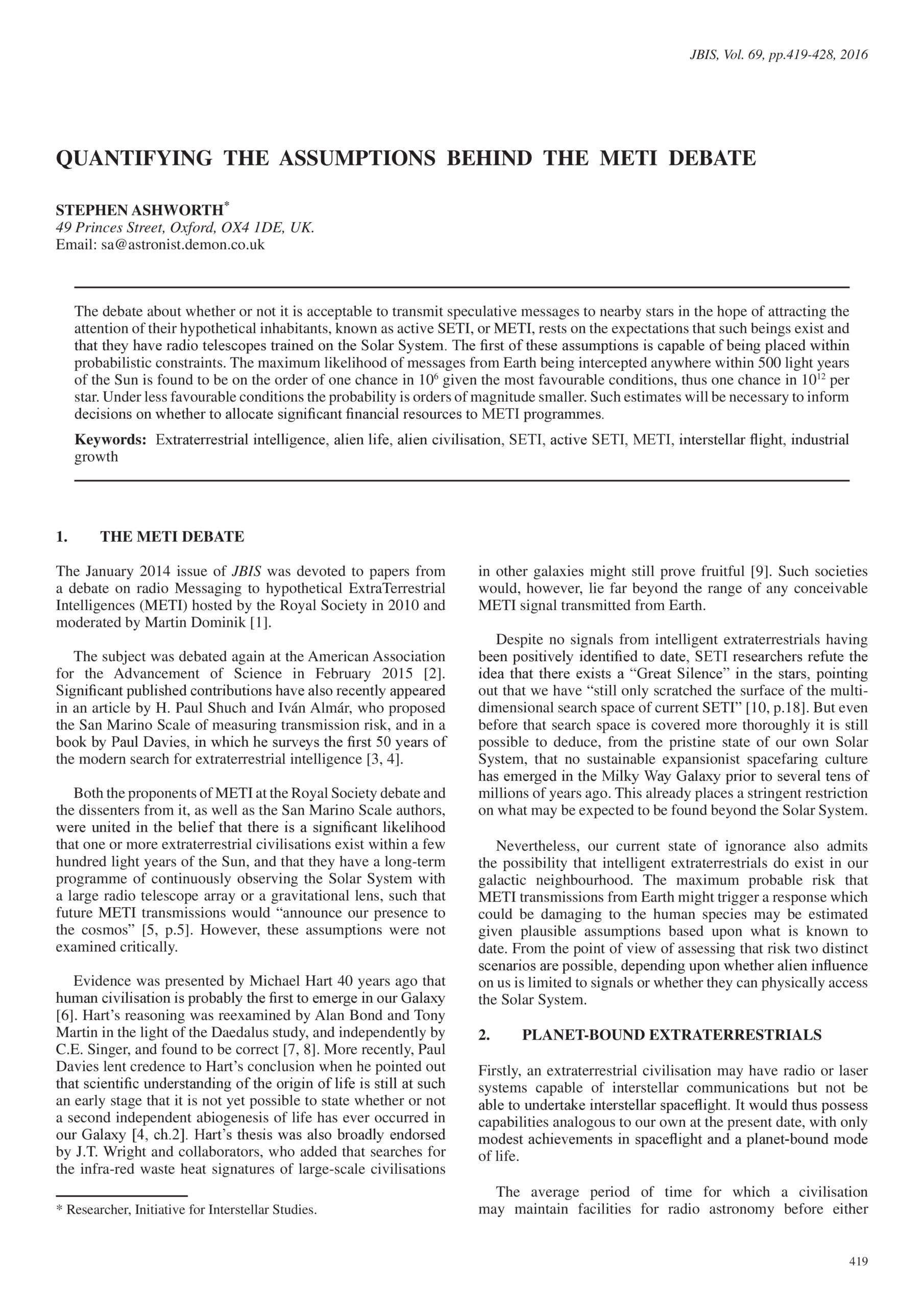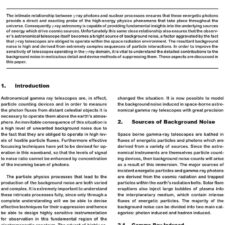Quantifying the Assumptions behind the METI Debate
£5.00
S. Ashworth (2016), JBIS, 69, pp.419-428
Refcode: 2016.69.419
Keywords: Extraterrestrial intelligence, Alien life, Alien civilisation, SETI, Active SETI, METI, Interstellar flight, Industrial growth
Abstract:
The debate about whether or not it is acceptable to transmit speculative messages to nearby stars in the hope of attracting the attention of their hypothetical inhabitants, known as active SETI, or METI, rests on the expectations that such beings exist and that they have radio telescopes trained on the Solar System. The first of these assumptions is capable of being placed within probabilistic constraints. The maximum likelihood of messages from Earth being intercepted anywhere within 500 light years of the Sun is found to be on the order of one chance in 106 given the most favourable conditions, thus one chance in 1012 per star. Under less favourable conditions the probability is orders of magnitude smaller. Such estimates will be necessary to inform decisions on whether to allocate significant financial resources to METI programmes.





